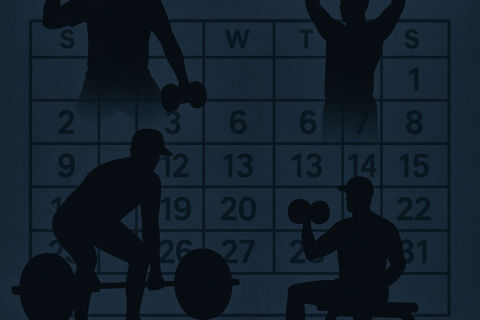A Deeper Dive: The Value of Force Plates During the Season
For continued health and development during the Spring season, it is essential to objectively use data to monitor stress and force levels. This ensures athletes stay ahead of potential injuries and performance deficits instead of reacting to them.
What Do Force Plates Measure
Force plates measure force output and the movement capacity of the Central Nervous System (CNS). Most users of force plate only measure peak force output because of the simplicity of the metric, but at KPI we have a much more nuanced and holistic approach so we can give each athlete exactly what they need to meet their individual movement needs.
We use a variety of metrics and formulas to measure an athletes movement capacity, including; their force development, ability to transfer their force, the timing of their force, vertical jump height, and balance of their force. This holistic approach and deep dive into their CNS allows us to take an in-depth look under the hood and pinpoint what an athlete needs, not just prescribe blanket programs to improve force output, as many athletes need much more than that.
What Do We Look at During the Competitive Season?
Athletes jumping on the force plates during the competitive season is extremely important, as their adaptation to the stress they are accumulating on the field needs to be watched closely. With the high repetitions in practice and the stress of games, particularly at the premium positions, it is easy for high performing athletes to enter into “red flag” territory where their training should be adjusted or scaled in real time, and not in a reactive nature after an injury occurs.
During the season we pay particular attention to the athletes’ force output in relation to their timing. A simple example of what we often see in an overstressed athlete is the force goes way down in comparison to their established baseline and they take much more time to complete their movements. This signals that the athlete is overstressed and we know that most injuries happen during periods of fatigue. If it is a pitcher, we will cross reference with their arm care scores and set a prescription moving forward to get them back to a healthy baseline. We do all this while constantly consulting with the athletes and our wellness team to ensure communication is open and everyone remains on the same page.
This Is Why the #KPICrew Stays So Healthy
We often get lauded for how healthy we are able to keep athletes at KPI, and in turn, those athletes are able to perform and excel on the field. Monitoring the athletes very closely on our Hawkin Dynamics Force Plates during the competitive season is one of the main ways we are able to keep our crew competing at a high level on the field.


